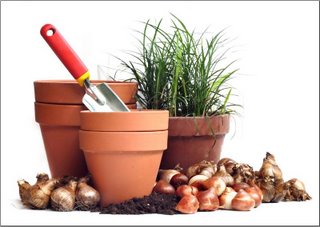Across the United States, we are feeling that nip in the air, watching skies darken, watching trees take on glorious hues. It’s a time of old things and new things. Many of us have had a delightfully mild autumn so far – giving us plenty of time to plant some bulbs for next spring. While planting some Pheasant’s Eye daffodil bulbs in my garden, a parallel occurred to me between what I was doing and the basic tenets of the Montessori method. This is how it strikes me:
Planting bulbs begins with preparing the soil correctly; in other words, I am thoughtfully preparing an environment in which everything that is needed is available. In the case of my daffodils, this means a sunny space, tilled earth with plenty of breathing room, vital soil nutrients and a little burst of water to get things started. In the case of the Montessori child, we prepare a peaceful place, plenty of private learning time, essential learning materials and a word of encouragement from the parent or teacher to get going and growing!
Once the bulb is in the ground or the child is in his work space, we step back and let nature take its course. We need to stick around, of course, to pull weeds or ensure that conflicts are resolved in a healthy way. But, if we love our world, we don’t sweep down on it with blasts of insecticide that wither the earth, or shaming punishments that wither the soul of the human child. We simply take up our watchful post nearby, confidently awaiting positive outcomes because we have prepared a space with thoughtful care.
Gardeners, parents, and teachers know the rewards of a job well done. The stunning bloom or the independent and happy child is the proof that our efforts were good ones. Few experiences I know of can surpass the hopeful anticipation and ultimate satisfaction of this work we are all engaged in. It’s pleasant to reflect on this.
Why Not Plant Some Bulbs With Children This Fall?
 Maria Montessori believed that real, hands-on work with measurable results is so important for every child. Why not pick up some bulbs at your local nursery this week? The children in your care will feel very useful getting to work alongside you, and if you take the time, you can teach them about the nomenclature of the papery, brown knobs you are planting together. Children can easily learn to tell the difference between a tiny crocus bulb with its net-like covering, and a big, glossy-skinned tulip bulb.
Maria Montessori believed that real, hands-on work with measurable results is so important for every child. Why not pick up some bulbs at your local nursery this week? The children in your care will feel very useful getting to work alongside you, and if you take the time, you can teach them about the nomenclature of the papery, brown knobs you are planting together. Children can easily learn to tell the difference between a tiny crocus bulb with its net-like covering, and a big, glossy-skinned tulip bulb.
Teach them how to prepare the ground to give the bulbs what they need, and when planting is finished, explain that it’s time to step back and let the bulbs do their own work in the privacy of the earth. If you don’t have access to a garden, bulbs can be planted in outdoor planters or alongside pathways or sidewalks.
For the winter months, you could make up some nomenclature cards showing the life cycle of a bulb or the parts of a bulb. You might want to make some cards that depict different kinds of flowers that bloom from bulbs, such as freesia, iris, daffodil and tulip. Gardening catalogs can be a big help with this! Looking at the pictures will build anticipation for the exciting emergence of the beautiful flowers next spring.
Before we know it, spring will be here and the children will have the delight of seeing the very real outcomes of work well done. The experience of caring for a plant and enjoying its thanks in the shape of beautiful blossoms teaches a child many important lessons they will carry with them through life.

